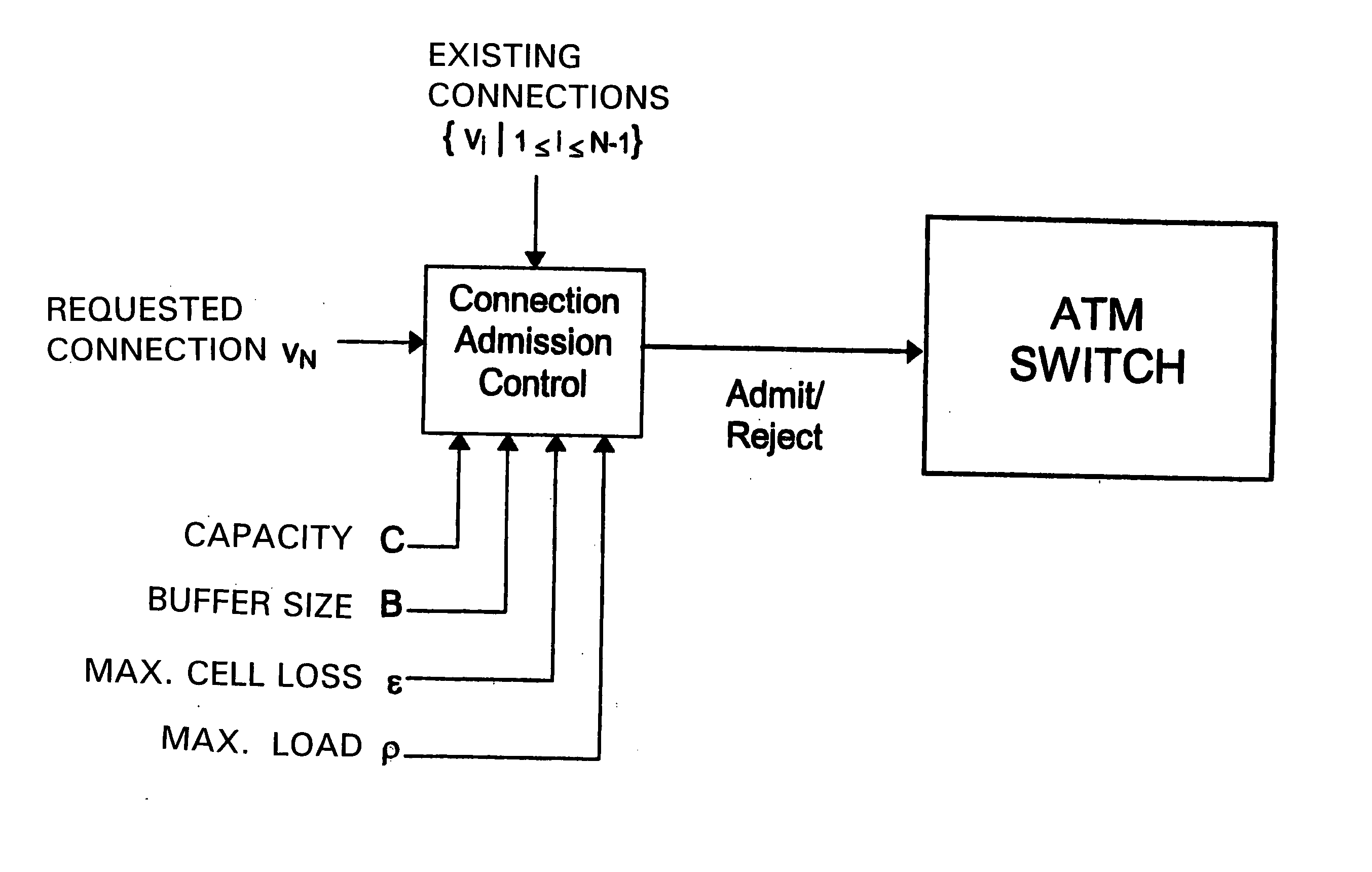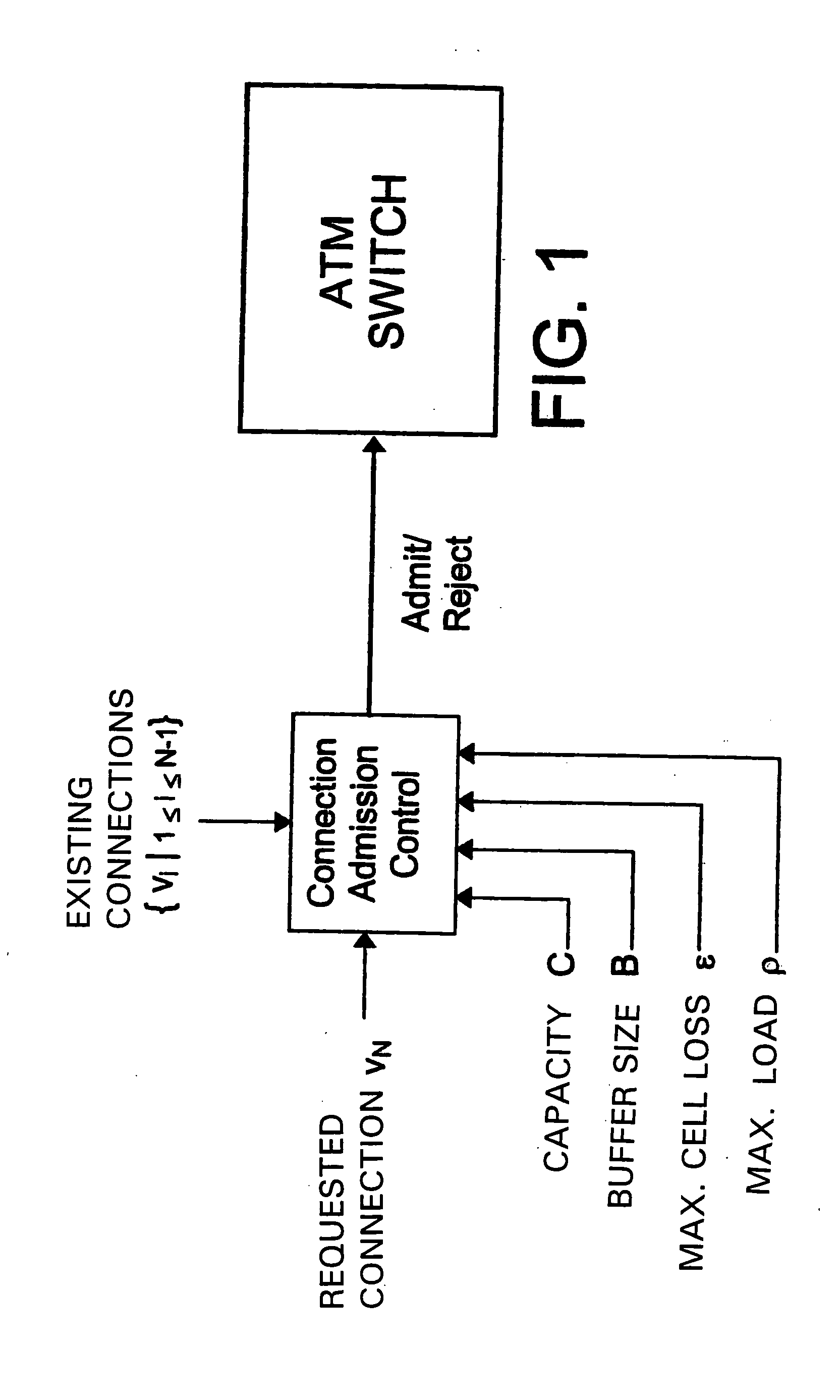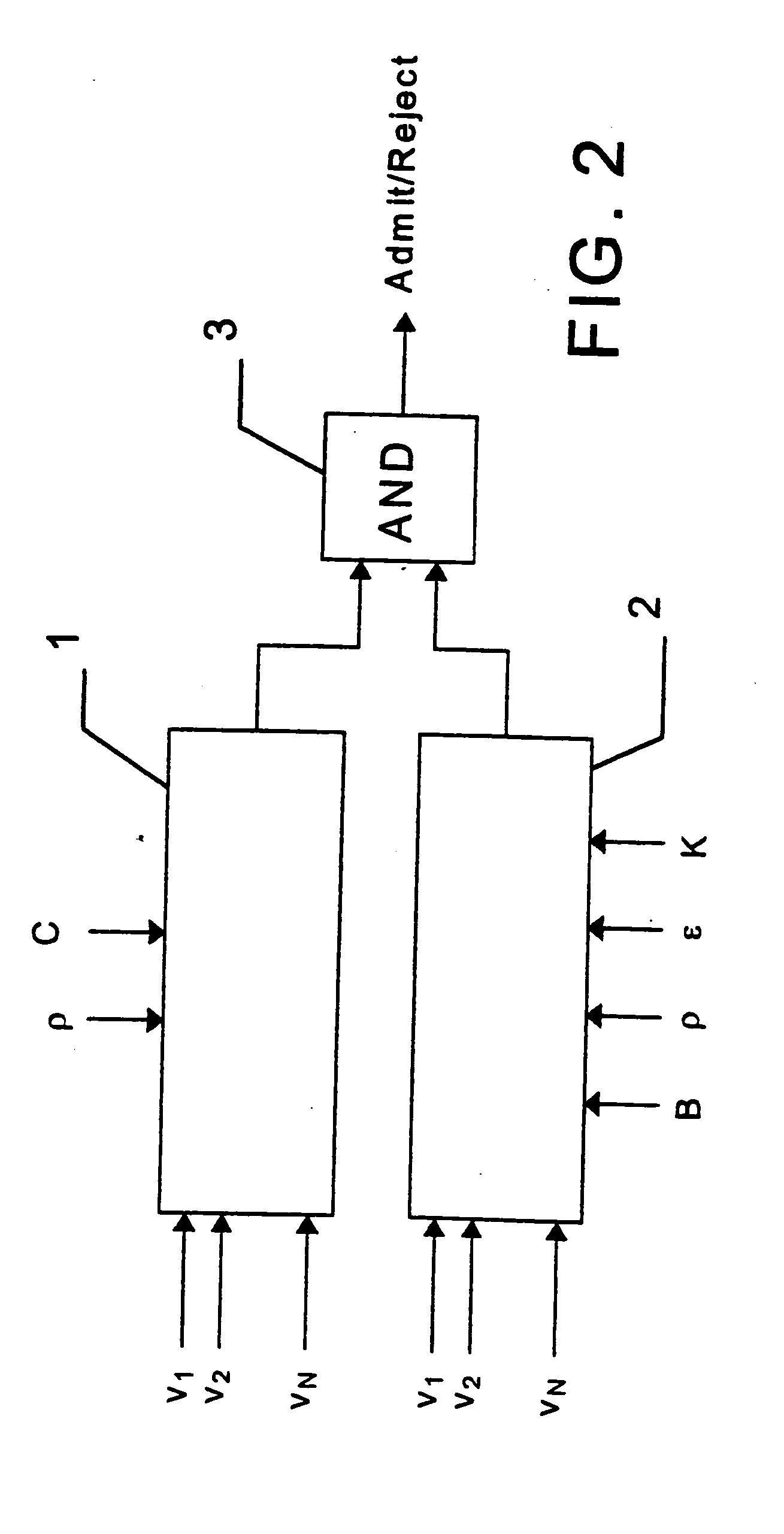ATM connection admission control device for DBR connections
a control device and dbr connection technology, applied in data switching networks, frequency-division multiplexes, instruments, etc., can solve the problems of not taking into account the consequences of such a simple buffer, unforeseen cell loss and/or extra delay, and inability to “shape” the effect of the buffer
- Summary
- Abstract
- Description
- Claims
- Application Information
AI Technical Summary
Benefits of technology
Problems solved by technology
Method used
Image
Examples
Embodiment Construction
[0043]FIG. 1 shows a CAC device in general. The traffic parameters (PCR and CDVT) of an arbitrary number of already existing ATM connections V1 . . . VN−1 are supplied to the CAC device, as well as the traffic parameters of a newly requested ATM connection VN. A maximally allowable cell loss probability parameter ε is furthermore supplied, as well as the applicable buffer capacity B and link capacity C. A maximally allowable degree of occupation ρ is also supplied. The result of the device is an “admit / reject” signal, on the basis of which the requested ATM connection vN is or is not admitted to the ATM switch.
[0044]FIG. 2 shows a diagrammatic overview of a CAC device according to the invention. The CAC device is composed of a sub-device 1 and a sub-device 2. Each sub-device can emit a positive (“admit”) or a negative (“reject”) signal. Both signals are supplied to a logical AND port 3, of which the output signal is only positive if both input signals are positive.
[0045]FIG. 3 sho...
PUM
 Login to View More
Login to View More Abstract
Description
Claims
Application Information
 Login to View More
Login to View More - R&D
- Intellectual Property
- Life Sciences
- Materials
- Tech Scout
- Unparalleled Data Quality
- Higher Quality Content
- 60% Fewer Hallucinations
Browse by: Latest US Patents, China's latest patents, Technical Efficacy Thesaurus, Application Domain, Technology Topic, Popular Technical Reports.
© 2025 PatSnap. All rights reserved.Legal|Privacy policy|Modern Slavery Act Transparency Statement|Sitemap|About US| Contact US: help@patsnap.com



